Search results for "kjell"
The books that sold in December
9 January 2014 | In the news
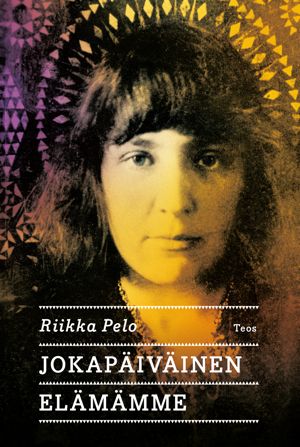 It seems that the Finlandia Prize does, as intended, have a strong influence in book sales. In December, a novel about the Russian poet Marina Tsvetaeva by Riikka Pelo, Jokapäiväinen elämämme (’Our everyday life’), which won the fiction prize in December, reached number one on the list of best-selling Finnish fiction.
It seems that the Finlandia Prize does, as intended, have a strong influence in book sales. In December, a novel about the Russian poet Marina Tsvetaeva by Riikka Pelo, Jokapäiväinen elämämme (’Our everyday life’), which won the fiction prize in December, reached number one on the list of best-selling Finnish fiction.
The next four books on the list – compiled by the Finnish Booksellers’ Association – were the latest thriller by Ilkka Remes, Omertan liitto (‘The Omerta union’), a novel Me, keisarinna (‘We, the tsarina’), about the Russian empress Catherine the Great by Laila Hirvisaari, a novel, Hägring 38 (‘Mirage 38’), by Kjell Westö, and a novel, Kunkku (‘The king’), by Tuomas Kyrö.
The winner of the Finlandia Prize for Non-Fiction, Murtuneet mielet (‘Broken minds’), about the mentally crippled Finnish soldiers in the Second World War, also did well: it was number two on the non-fiction list. (Number one was a book about a Finnish actor and television presenter, Ville Haapasalo, who trained at the theatre academy in St Petersburg and became a film star in Russia.)
The ten best-selling books for children and young people were all Finnish (and written in Finnish): it seems that this time the buyers of Christmas presents favoured books written by Finnish authors.
The snake
31 March 1998 | Fiction, Prose
In this horror story by the Finland-Swedish author Kjell Lindblad (born 1951), a man believes he is wandering among art installations in an apartment block – but the reality he is experiencing turns out to be much more sinister. From the collection of short stories Oktober-mars (‘October-March’, Schildts, 1997)
I only noticed the poster on the notice board in the vegetarian restaurant because it was so obviously different from the rest of the colourful items there, with their large headlines offering everything from Atlantic meditation to Zen ping-pong, together with promises of a new and fulfilled life in harmony with the soul and the cosmos. Poster is perhaps an overstatement it was a white sheet of paper with an egg-shaped oval in the middle. Inside the oval there was a horizontal row of seven numbers. For some reason, perhaps because the row of numbers was the only information on the piece of paper, it stuck in my memory and when I got home I had a compulsive desire to find out if it was a phone number. So I dialled the number and a tape-recorded voice that could have belonged to a man but equally well to a woman, said:
‘We bid you welcome. Please don’t write down the address just memorise it….’ More…
Finlandia Prize for Fiction 2013
14 November 2013 | In the news
One of the following six novels will be awarded this year’s Finlandia Prize for Fiction, worth 30,000 euros: Ystäväni Rasputin (’My friend Rasputin’) by JP Koskinen, Hotel Sapiens (Teos) by Leena Krohn, Jokapäiväinen elämämme (‘Our everyday life’, Teos) by Riikka Pelo, Terminaali (‘The terminal’, Siltala) by Hannu Raittila, Herodes (‘Herod’, WSOY) by Asko Sahlberg and Hägring 38 (‘Mirage 38’, Schildts & Söderströms; Finnish translation, Kangastus, Otava) by Kjell Westö.
Half of the writers have already won the Finlandia Prize once, namely Krohn (1992), Raittila (2001) and Westö (2006).
Four of the six works deal with a historical character or history: Koskinen with the Russian ‘holy man’ Rasputin, Pelo with the Russian poet Marina Tsvetaeva, Sahlberg with Herod the Great of Judea. Westö goes back to the year 1938 in Finland.
Raittila’s realistic novel takes place on contemporary airports. Krohn, again taking a look at an unknown future, presents the reader with a imaginary Earth which no longer is habitable to humans.
The runners-up were chosen by a jury – appointed by the Finnish Book Publishers’ Association – of three: the journalists Nina Paavolainen and Raisa Rauhamaa and the translator Juhani Lindholm. The winner of the 30th Finlandia Prize for Fiction will chosen by theatre manager of the Helsinki City Theatre and actor Asko Sarkola, and announced on 3 December.
Worlds apart
18 June 2009 | Extracts, Non-fiction
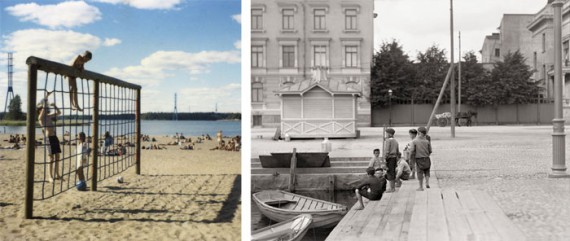
Helsinki boys by the sea: in Martti Jämsä’s Polaroid lads play on the beach; in I.K. Inha’s photograph (Hietalahden satama, ‘Hietalahti harbour’), taken a century earlier, barefoot urchins meet up on the quayside
A hundred years ago the photographer I.K. Inha (1865–1930) was asked to illustrate a tourist guide to Helsinki. He took some 200 photographs, of which some 60 were included in the book, which was published by WSOY in 1910. In his new book of photographs, OPS! Helsinki Polaroid¹, Martti Jämsä (born 1959), wanders the same streets a century on, taking snapshots with his Polaroid camera. More…
A new publishing company – and old
23 December 2011 | In the news
In the early months of 2012 Finland’s two old and time-honoured Swedish-language publishers, Schildts and Söderströms, will merge.
Söderströms will buy Schildts, whose owners (two non-profit associations, Svenska folkskolans vänner and Finlands svenska lärarförbund) will acquire a nearly 20 per cent share in the new company. The largest share in Schildts & Söderströms will be held by the art association Konstsamfundet (24 per cent), while the company’s third major owner will be Svenska Litteratursällskapet i Finland (15 per cent).
Both publishers have been operating with a loss in turnover of approximately half a million euros, though at the same time investment capital has brought them almost the same amount. Textbook publishing has been profitable for both, while general literature has been published at a loss.
With a turnover of slightly over six million euros, the new Schildts & Söderströms will employ a workforce of nearly 50.
 Holger Schildt founded the Finnish-Swedish publishing house of Schildts in 1913. Its most internationally famous and best-selling fiction writer is the mother of the Moomins, Tove Jansson (1914–2001). Edith Södergran, Runar Schildt, Bo Carpelan and Robert Åsbacka are, for example, Schildts’ authors.
Holger Schildt founded the Finnish-Swedish publishing house of Schildts in 1913. Its most internationally famous and best-selling fiction writer is the mother of the Moomins, Tove Jansson (1914–2001). Edith Södergran, Runar Schildt, Bo Carpelan and Robert Åsbacka are, for example, Schildts’ authors.
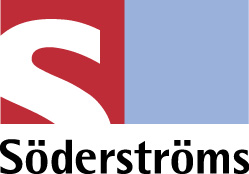 Werner Söderström founded the company that bears his name in 1878. Now known as WSOY, it originally published both Finnish and Swedish-language literature; the firm of Söderström & Co. was founded in 1891 for the exclusive publishing of Swedish-language literature. Söderström’s authors have included Gunnar Björling, Jörn Donner, Monika Fagerholm and Kjell Westö, among others.
Werner Söderström founded the company that bears his name in 1878. Now known as WSOY, it originally published both Finnish and Swedish-language literature; the firm of Söderström & Co. was founded in 1891 for the exclusive publishing of Swedish-language literature. Söderström’s authors have included Gunnar Björling, Jörn Donner, Monika Fagerholm and Kjell Westö, among others.
It is thought that the merger may lead to a reduction in the number of fiction and poetry titles published – but there are also hopes that there may be an improvement in their quality.
Men and a woman, too
7 November 2009 | This 'n' that
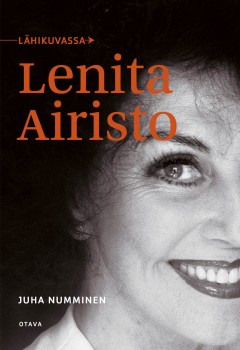 In October, according to the best-seller list (Mitä Suomi lukee, ‘What Finland reads’), the top seven non-fiction titles included biographies of four Finns – an industrial tycoon (Pekka Herlin, one-time director of the Finnish Kone elevator company), a poet (Paavo Haavikko), and a former Prime Minister (Paavo Lipponen).
In October, according to the best-seller list (Mitä Suomi lukee, ‘What Finland reads’), the top seven non-fiction titles included biographies of four Finns – an industrial tycoon (Pekka Herlin, one-time director of the Finnish Kone elevator company), a poet (Paavo Haavikko), and a former Prime Minister (Paavo Lipponen).
The seventh place was held by a book on a woman: Lenita Airisto, winner of a 1950s beauty contest, later a television hostess, celebrity, writer and businesswoman (Lähikuvassa Lenita Airisto, ‘Lenita Airisto in closeup’, by Juha Numminen).
The Finnish fiction list was topped by the latest thriller by Ilkka Remes, Isku ytimeen (‘Strike to the core’). Then came Kjell Westö’s novel Älä käy yöhön yksin (‘Don’t go out into the night alone’, a translation of the Swedish-language original, Gå inte ensam ut i natten) and Jari Tervo’s Koljatti (‘Goliath’). The latest Henning Mankell was number one on the translated fiction list.
Thrills and spills
23 October 2009 | This 'n' that
In September the comic strip Viivi & Wagner by Juba, number two in August on the list of best-selling books (Mitä Suomi lukee, ‘What Finland reads’ – in Finnish only), gave way to Jari Tervo’s political satire Koljatti (‘Goliath’) and to a new thriller by Ilkka Remes (Isku ytimeen, ‘Strike to the core’).
Number three was Kjell Westö’s novel Älä käy yöhön yksin (in Finnish; the original, Gå inte ensam ut i natten, was published in Swedish, Westö’s mother tongue; ‘Don’t go out into the night alone’) and number four Kari Hotakainen’s novel Ihmisen osa (‘The human condition’).
Numbers eight and nine were new thrillers / crime novels by Leena Lehtolainen and Matti Rönkä. Historical novels by Kaari Utrio and Laila Hirvisaari took the fifth and sixth places.
Not surprisingly, the international bestsellers Paulo Coelho, Henning Mankell, Donna Leon and Patricia Cornwell led the translated fiction list.
As for non-fiction, the doings of Finnish Security Police interests people greatly: a history of it from 1949 to 2009 (edited by Matti Simola), entitled Ratakatu 12 (‘Ratakatu street 12’, WSOY) made its way to the top. It was followed by a biography of the industrial magnate Pekka Herlin of the Kone elevator company, Koneen ruhtinas (‘The prince of Kone’) – and Hitler by Ian Kershaw.
The search goes on
31 December 2007 | Archives online, Essays, On writing and not writing
The Finlandia Prize-winning author Kjell Westö recalls his literary adolescence, and the moment – of a dark January night – when he stopped worrying about writer’s block and began to write
When I was in my twenties, my urge to write was very strong. I was driven, almost consumed, by this ever-present zeal, which tore me apart nearly as inexorably and effectively as love did. But I wrote precious little. Now, some twenty years later, I have a general idea about the traps I so unknowingly walked into. More…
The Finlandia Prize for Fiction 2013
5 December 2013 | In the news
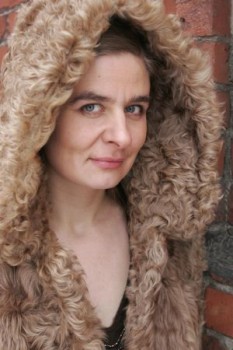
Riikka Pelo. Photo: Heini Lehväslaiho
The director general of the Helsinki City Theatre, Asko Sarkola, announced the winner of the 30th Finlandia Literature Prize for Fiction, chosen from a shortlist of six novels, on 2 December in Helsinki. The prize, worth €30,000, was awarded to Riikka Pelo for her novel Jokapäiväinen elämämme (‘Our everyday life’, Teos).
In his award speech Sarkola – and actor by training – characterised the six novels as ‘six different roles’:
‘They are united by a bold and deep understanding of individuality and humanity against the surrounding period. They are the perspectives of fictive individuals, new interpretations of the reality we imagine or suppose. Viewfinders on the present, warnings of the future.
‘Riikka Pelo‘s Jokapäiväinen elämämme is wound around two periods and places, Czechoslovakia in 1923 and the Soviet Union in 1939–41. The central characters are the poet Marina Tsvetaeva and her daughter Alya. This novel has the widest scope: from stream of consciousness to interrogations in torture chambers and the labour camps of Vorkuta; always moving, heart-stopping, irrespective of the settings.’
The five other novels were Ystäväni Rasputin (’My friend Rasputin’) by JP Koskinen, Hotel Sapiens (Teos) by Leena Krohn, Terminaali (‘The terminal’, Siltala) by Hannu Raittila, Herodes (‘Herod’, WSOY) by Asko Sahlberg and Hägring 38 (‘Mirage 38’, Schildts & Söderströms; Finnish translation, Kangastus, Otava) by Kjell Westö (see In the news for brief features).

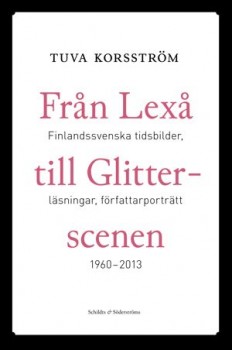 Tuva Korsström
Tuva Korsström